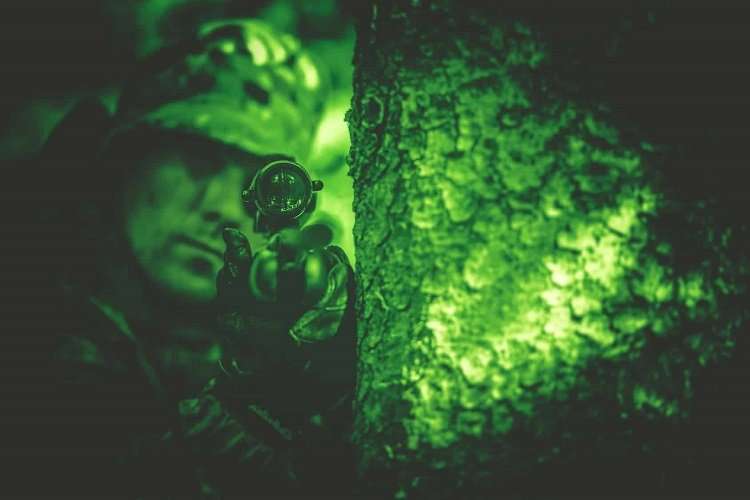
Looking to engage targets at night?
Whether you’re controlling nuisance animals or defending your loved ones, we’ll cover the pros and cons of night vision vs. thermal imaging and help you decide which is right for you.
Night vision and thermal imaging both give you the ability to see in the dark, but they work in different ways. Night vision requires a source of ambient light like a full moon or nearby streetlights while thermal imaging uses infrared technology to produce an image without any external light sources. This is one of those situations where there is no clear answer; it depends on what your situation calls for.
How important are night vision optics when shooting at night?
Night vision optics provide the shooter with an image in low-light conditions, allowing them to engage targets even when there is no other source of light. The combat effectiveness of troups with night vision optics is much higher than those without.
How does night vision work?
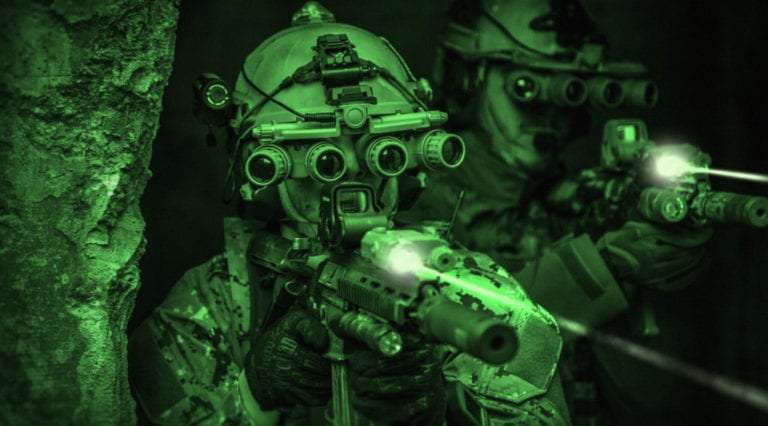
Night vision works by amplifying the ambient light available. This means you will see a more defined image in low-light conditions, but it also requires an external source of illumination to function properly. A full moon or street lights will provide enough supplemental light for night vision devices (NVDs) such as goggles and scopes to produce clear images.
Night vision: Pros and Cons
Night vision technology is very popular for good reason.
- Night vision is more affordable than thermal imaging.
- Night vision can see in the dark better than thermal imaging.
On the other hand, it does have downsides.
- Night vision doesn’t see as well in complete darkness.
- Night vision is often not as clear.
- Bright lights can render it temporarily useless (headlights, flashlights, flashbangs or explosions)
How much does a good night vision scope cost?
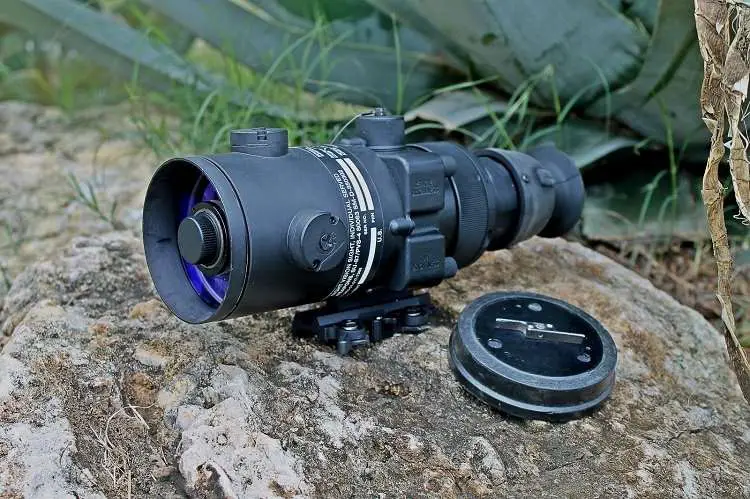
NVDs can be found for as little as $300 or up to several thousand dollars depending on the model and features. If you’re looking to hunt at night without spending too much, check out our picks for the best night vision scopes for coyote hunting.
How does thermal imaging work?
Thermal imaging detects infrared radiation, also known as heat. Thermal sensors do not need an external source of light to work properly. However, thermal cameras are unable to see objects emitting very little or no heat at all (such as humans in the cold or with heavy insulation on).
Thermal Imaging: Pros and Cons
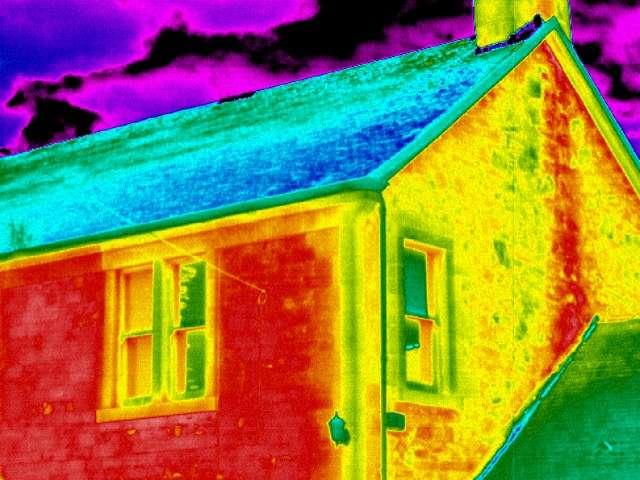
Thermal imaging was invented in the 1960s by Raytheon. Here are the benefits compared to night vision:
- Thermal imaging is very useful in hot and cold environments, from arctic to desert conditions.
- In addition, thermal imaging does not require an external light source for it to work properly – meaning that any dark night or underground bunker will be just as visible to a thermal imager as in the daytime.
The cons of thermal imaging are:
- Thermal imaging cameras are generally much more expensive than night vision, although prices have dropped in recent years.
- They also require a small amount of time to “boot up” after being switched on – meaning that if you need it for immediate use (such as when entering an ambush situation), thermal is not the best choice.
In the end, both technologies have their pros and cons.
How much does a good thermal scope cost?
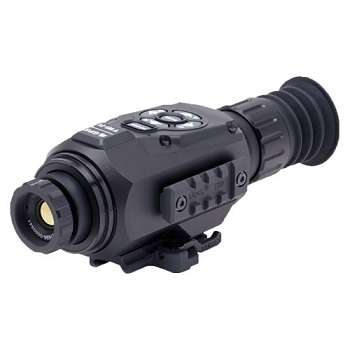
Thermal imaging scopes can be found at all price levels, from as low as $500 up to several thousand dollars.
Conclusion
Night vision and thermal imaging both give you the ability to see in the dark, but they work differently. Night vision requires a source of ambient light like a full moon or nearby streetlights while thermal imaging uses infrared technology to produce an image without any external light sources. This is one of those situations where there is no clear answer; it depends on what your situation calls for.
NVDs are normally more cost-effective and work only with ambient light sources. Plus, they don’t work in daylight or with bright lights.
Thermal optics are more expensive but work in complete darkness and don’t require an external light source. Plus, they work during the day or under bright lights.
Whichever you choose, make sure to get a reliable piece of equipment from a reputable manufacturer for your own safety and effectiveness on the job!
